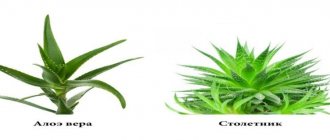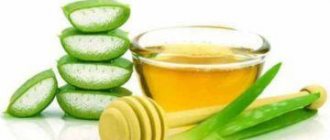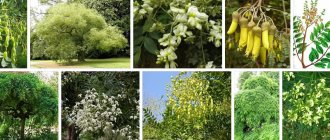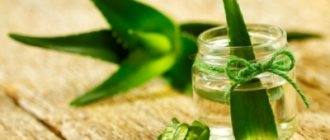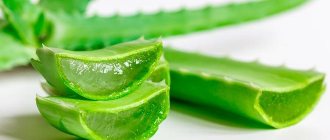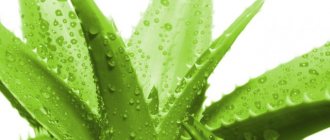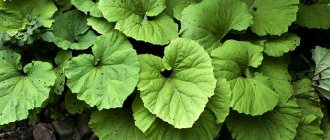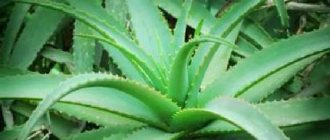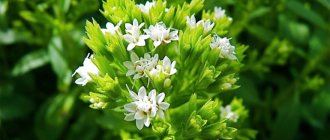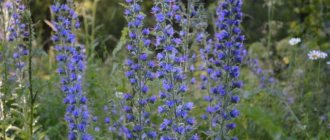Aloe is the same “grandmother’s flower” that each of us has known since childhood. Indeed, there are few families where this home remedy-agagae (this is also the name of this plant) would not be grown. Sometimes growing to impressive sizes, it often obscures the window and causes trouble for owners who do not know what to do with it. But it can and should be used! The valuable qualities that aloe possesses are not inherent in any other indoor plant. What types of aloe can be used for medicinal purposes, and how best to do this, we will tell you in this article.
Aloe - medicinal types and effective recipes for use
Medicinal types of aloe
The Aloe genus includes numerous xerophytes and succulents. Perennial plants are found in nature in the form of herbaceous leafy, shrubby and even tree-like forms. There are many varieties of aloe, but they all come from the tropics of southern Africa, Madagascar and the Arabian Peninsula.
The main feature of aloe is its thick sword-shaped leaves. It is in them that the plant accumulates moisture, which allows it to survive drought and other natural disasters. In difficult weather conditions, aloe closes the pores of the skin, due to which the water accumulated in the leaves is retained for quite a long time, without evaporating or drying out the plant.
You can find various types of aloe on sale, but many of them are decorative flower forms. Only two species have medicinal qualities - Aloe Vera and Aloe vera.
Aloe vera
Aloe vera _
) is one of the types of plants that would be more correctly called
aloe vera .
But both names are used equally. Aloe vera is a succulent plant with a short stem. Thick fleshy leaves form a dense rosette, which under natural conditions grows up to 60 cm in diameter. Aloe vera leaves are gray with small spots on the surface. The edges of the leaf blade are covered with small spines. The root system is poorly developed. Aloe vera flowers are tubular, of different shades of orange, but you can only see them in natural conditions - your “healer” will not want to bloom on the windowsill.
Aloe arborescens
Tree aloe ( Aloe arborescens
) can have the appearance of a tree or shrub and in nature often reaches five meters in height. The trunk is covered with long, fleshy leaves with soft thorns along the edges. In an adult plant, the lower leaves fall off, and the exposed trunk is covered with numerous basal shoots, making the aloe look like a spreading bush.
When aloe blooms, a long panicle with bright orange flowers appears. When kept at home, it rarely blooms, and the size of the indoor plant is much more modest.
Aloe vera. © Alberto Alvarez-Perea
Tree aloe (Aloe arborescens). © Uhlig Kakteen
Varieties of aloe
There are 340 species of aloe. In addition to those varieties that nature has created, there are also specially bred hybrids for decorative purposes.
Let's start with those that are widely known and popular.
Aloe vera
@ogorodniki.com
Vera means “real”. This is a succulent plant with thick, fleshy green or bluish leaves collected in a rosette (up to 60 cm in diameter) around a short stem. Blooms with yellow or red flowers. There may be slight spotting on the surface of the leaves; there are spines along the edges of the leaf blade.
Aloe arborescens
@natural-museum.ru
It differs from real aloe in its smaller leaves. Over time, the lower ones of the plant dry out, freeing up space for numerous shoots. The flowers are orange, collected in a panicle. In nature, the plant reaches a height of 4 meters.
Aloe spinosa
@Botanichka.ru
It is a small rosette of pointed and raised leaves, with numerous white spines. In indoor conditions it practically does not bloom, but in nature it pleases with spectacular orange inflorescences.
Aloe variegated
@greensotka.ru
It is also called tiger. The dark green leaves with a white “tiger pattern” are arranged in a spiral pattern. It reaches a height of no more than 30 cm. Shoots grow from the root, resulting in a bush-like appearance.
Medicinal properties of aloe
Aloe is a unique medicinal plant. Its chemical composition is unique - the plant juice contains about two hundred and fifty active biological substances. Aloe leaves are 97% water - the same juice that is a concentrate of useful substances.
Aloe juice contains:
- vitamins A, C, E and B vitamins;
- microelements – zinc, manganese, phosphorus, calcium, selenium, potassium, iron, etc.;
- various essential oils, including esters;
- phytoncides and flavonoids;
- tanning agents and resins;
- amino acids;
- beta carotene;
- alkaloids and other beneficial substances.
In terms of the content of useful substances, the juices of tree aloe and aloe vera are approximately the same, but it is generally accepted that the former is more successful in treating skin diseases, and the latter in treating diseases of internal organs.
Aloe is a very unassuming plant and anyone can grow it if they want. This plant can grow for years in a cramped pot and withstand neglect from its owners. But in order for the medicinal properties of aloe to be at the level, the plant must be provided with nutritious soil and timely fertilizing.
Kinds
Below we present all the varieties and varieties, also known as “agagave,” with a detailed description of the plant and photos.
Faith
Aloe vera is an indoor, flowering plant.
bushy perennial plant . Numerous shoots are formed on the shortened stem. Rosettes are formed from grooved leaves with spines on the edges.
You can learn more about aloe vera from this article.
Spinous
Spinous is an indoor, flowering plant.
Perennial. leaves with , collected in an arched rosette with a diameter of up to 60 cm. The flowers are red or orange.
You can read more about awned aloe in this material.
Motley
Variegated aloe is an indoor, flowering plant.
Grows up to 30 cm . The leaves are grouped near the stem and have a white stripe along the edges, for which it is also called tiger. The tubular flowers are red, pink or yellow.
More nuances about variegated aloe can be found in this article.
Treelike
Evergreen shrub. With normal care at home, it can grow up to 1 m in height. Bluish-green leaves up to 60 cm long densely cover the branched stem. Has a pleasant aroma.
You can read more about tree aloe here.
Cap-shaped
Herbaceous. Succulent bluish-green leaves grow on short creeping stems, covered with spines below. The flowers are dark scarlet.
Frightening
An individual with a powerful stem up to 3 m high. Up to 60 bright green thorny leaves form a rosette crown at the top. The tube-shaped flowers are orange-red in color.
African
Africana is a flowering plant grown in gardens.
The straight stem reaches a height of 3-4 m . At the top grow gray-green, lanceolate-shaped leaves with jagged edges up to 65 cm long. The flowers are orange.
Indian
Herbaceous perennial. It has beautiful narrowed leaves of bluish-green color with teeth along the edge. Collected into sockets. Peduncle 70-90 cm .
Striped
Without stem . Large (up to 50 cm), gray-green, fleshy leaves with longitudinal stripes are grouped into rosettes. Small red flowers are collected in brushes. Peduncle - up to 90 cm.
Mix
Aloe mix does not bloom in the room.
Evergreen bushy plant . Creeping shoots reach a length of 50 cm. They grow fleshy, smooth leaves with small thorns. The flower clusters are red-orange in color.
Squat
Herbaceous. The lanceolate, slightly serrated leaves have a bluish-green tint. The peduncle is low (up to 25 cm), the flowers are red (orange).
Ezhovoye
Bush-like. Thick stem with large branches. The light green leaves (up to 16 m long) are convex on both sides. Tubular flowers are red (yellow).
Juvenile
Juvenile - does not bloom in the room.
Compact plant with shoots up to 10 cm . The variegated green-yellow leaves with old streaks have denticles along the edges. Can grow in the same pot with other types of aloe.
Pleasant
A miniature plant with a diameter of no more than 8 cm . Glossy green leaves with white speckles form a dense rosette. They bloom with pink “bells” at a young age.
Descoings
A herbaceous crop with a short stem and basal shoots of oblong triangular . Color - from light green to dark green and brown. Orange flower.
Rauhi
Lanceolate, green leaves with small white spots and serrations form a small round rosette. Tubular flowers are yellow or orange.
Haworthiform
Does not have a stem. A large number of gray-green leaves with white papillae. The leaves (3-4 cm) are covered with small white spines. Blooms with pink or white buds.
Somali
Compact. Green glossy leaves with white stripes form a rosette 20 cm in diameter. Larger than aloe vera pleasanta, which is very similar.
Opposite leaf
It is distinguished by a rosette consisting of 2 rows . Flat, dark leaves with soft, jagged edges. Large flowers are orange-red in color.
Use of aloe in medicine
Aloe juice has been used for the treatment of various ailments since ancient times. The doctors of antiquity and the priests of ancient Egypt prepared their potions with the addition of the juice of this plant and relieved their patients from many diseases. Modern medicine confirms the medicinal properties of aloe and uses it to create various medicines.
Traditional healers use aloe juice in pure form or with the addition of medical alcohol, as well as plant leaves, extract and sabur (evaporated juice). The age of the plant is of great importance - it must be at least 3 years old. The older the aloe, the more beneficial substances its leaves contain.
Due to its bactericidal properties, aloe juice is used for streptococcal and staphylococcal infections. The plant’s ability to accelerate tissue regeneration is used in the treatment of purulent and infected wounds and cuts, various inflammatory diseases and irradiation. The components of the juice are active against diphtheria and dysentery bacilli.
Scientists have isolated an antibiotic from aloe juice that is used in the treatment of skin diseases and tuberculosis. Ophthalmologists use drops with the addition of aloe juice in the treatment of conjunctivitis, myopia, vitreous opacities and for the prevention of cataracts.
Aloe has an effect on headaches, blood diseases, bronchial asthma and various neuroses. Preparations from this medicinal plant are also used in the treatment of diseases of the stomach and intestines. In low doses, juice has a beneficial effect on digestion, improves the secretion of bile, enhances intestinal function and has a general strengthening effect on the human body.
Medicinal properties
Like most Aloe, Polifilla has a number of medicinal properties, but they have not been fully studied due to the small distribution of this plant in nature. It is known for certain that the juice of the plant can be used as a laxative, but for short periods of time. Long-term consumption of Aloe juice can provoke the development of oncology in the intestines.
All articles about Aloe on the site can be read by following this link: ALOE
You can also disinfect a small wound with a freshly cut leaf or use it as an anti-burn agent.
Rules for preparing aloe juice
When preparing aloe juice, you need to adhere to certain rules:
- two weeks before removing the leaves, stop watering the plant;
- the leaves are not cut, but carefully separated from the stem with your hands - this will prevent the juice from flowing out;
- to obtain juice, leaves are removed from the lower and middle parts of the trunk, that is, the oldest;
- the collected leaves are placed in a plastic bag and put in the refrigerator for 7-10 days (this way the plant accumulates the maximum amount of bioactive substances);
- the aged leaves are washed with water and dried;
- The juice can be squeezed out manually, after chopping the raw materials with a knife, or you can use a meat grinder, juicer or blender.
Interaction with metal in aloe juice partially destroys vitamin C. To prevent this from happening, it is better to chop the leaves with a ceramic knife and squeeze out the juice through a gauze cloth folded in two layers.
Aloe juice can be squeezed out by hand or using a meat grinder, juicer or blender. © Patrizia Palmisani
Variety of varieties and varieties
The natural habitat of aloe is the Arabian Peninsula, Africa.
Popular types of aloe with photos and names
Aloe spinosa is a houseplant that does not have a characteristic stem. A rosette of fleshy leaves with a diameter of 15 cm is directed upward. The leaf blade has a border of light thorns. The succulent blooms only if it is provided with the necessary conditions for keeping it with orange buds.
Cosmo is a spinous variety of plant that looks similar to Haworthia. Under favorable conditions it grows to impressive sizes. The crane rarely blooms. Peduncle up to 20 cm tall with pink or orange flowers. Tree aloe, variegated and tiger aloe are indoor plants that are grown on any window sills, do not tolerate waterlogging of the soil and fully develop only with sufficient lighting.
Squat - a plant with a compact rosette of green-gray leaf blades decorated with delicate whitish thorns. It blooms with red inflorescences, which are placed on a peduncle up to 30 cm high.
Rauha is a visitor from Madagascar with fleshy, jagged, triangular leaves. The diameter of an adult rosette is no more than 20 cm, the length of the leaves is 10 cm. The bluish leaf plate is decorated with longitudinal whitish stitches. This variety became the progenitor of many decorative forms.
Donnie , the variegated aloe, is a houseplant with rich green leaves edged with bright red and prized for its exquisite appearance. Used to create indoor “succulent gardens”.
Ezhevoye is a variety with dark leaves decorated with numerous spines. It blooms extremely rarely with yellow flowers.
Aloe marlotta is a tall variety that in nature reaches 4 meters in height. Fleshy leaves of silver-blue color with red-brown thorns are collected in a massive rosette. Blooms orange. The buds bloom on a peduncle up to 80 cm high.
Haworthiaceae is a plant that replenishes ornamental aloe species. Due to its exquisite appearance, it is popular among flower growers and collectors. A miniature rosette with spiked eyelashes is the decoration of the most exquisite succulent exhibition.
Opposite-leaved - small-shaped aloe with a characteristic arrangement of leaf blades (one opposite the other). The exquisite bluish tint of the leaves and the reddish thorns on them give the plant a delicate charm.
Aloe cap-shaped is a plant with ovate leaves up to 25 cm long. Color is gray-green. Light thorns were neatly placed on the edges of the leaf plate. The variety blooms with scarlet inflorescences. Peduncles grow up to 60 cm and beautifully rise above a small rosette.
Not all varieties of aloe (photos with names are presented on the website) are equally popular among gardeners. Some can only be found among the most “faithful” collectors of rare succulents.
Traditional recipes based on aloe
Vitamin “bomb”
Aloe juice is mixed with Cahors or any high-quality red wine and honey in equal quantities. The mixture is placed in a cool, dark place and left to infuse for at least 5 days. Take 1 tablespoon three times a day before meals. An excellent product for cleaning blood vessels and boosting immunity.
For the treatment of herpes
Lubricating the ulcers with aloe juice (5-6 times a day) prevents the rash from spreading, dries it out and speeds up recovery.
Laxative
Aloe juice is mixed with heated honey in a proportion of ½ and infused for 24 hours. Drink 1 tbsp. spoon one hour before meals.
For inflammation of the mouth and throat
In these cases, rinses are used. To do this, aloe juice is diluted with warm boiled water in a ratio of 1/1.
For toothache
A piece of aloe leaf with the cut part is placed on the sore tooth - this will help relieve pain until the dentist helps.
With a runny nose
Every day, 2-3 drops of aloe juice are instilled into each nostril. For children, the juice is diluted half and half with water.
After a serious illness
To restore strength after a serious illness, half a glass of aloe juice is mixed with 300 g of chopped walnuts, 300 g of honey and the juice of 3 lemons. Take 1 dessert spoon 3 times a day before meals. The product is suitable for both adults and children.
For the treatment of tuberculosis
Prepare the mixture: grind half a stick of butter with 20 g of aloe juice, add half a glass of honey and 3 tbsp. l. cocoa powder Mix everything well and drink 1 tablespoon 3 times a day. It is recommended to drink the mixture with hot milk.
For colds and bronchopulmonary diseases
Use a mixture: 300 g of aloe juice, 100 g of medical alcohol and 700 g of dry red wine. Store the product in a cool place without access to light. Adults drink 1 tbsp. spoon 3 times a day half an hour before meals, children over 5 years of age - 1 teaspoon.
For the treatment of frostbite and burns
A compress with aloe leaves crushed to a pulp is applied to frostbitten areas of the skin and wound surfaces. The same applies to burns.
To smooth out wrinkles
Wipe your face with ice and aloe. To do this, the plant juice is diluted in half with water, poured into molds and frozen. In the morning, wipe cleansed facial skin with a piece of ice. This product tightens pores well and increases blood circulation, so it is used not only to reduce wrinkles, but also against acne.
Mask for the face
If the skin is dry, mix the juice with any fatty cream or olive oil (1/1); for oily skin, take 4 parts of juice and mix with 1 part of alcohol. A gauze mask is soaked in the mixture and applied to the face for 15-20 minutes. To enhance the effect, add a little honey to the mixture.
For hair growth
1 tbsp. Mix l aloe juice with 50 ml apple cider vinegar, 1 tsp burdock oil and juice of 1 lemon. Rub the mixture into the scalp and apply to hair. Put a shower cap on your head and wrap it in a terry towel to keep warm. Leave for 40 minutes and then rinse with warm water and shampoo.
To strengthen hair
3 tbsp. l mix aloe juice with 1 raw yolk, add 1 tbsp. l. honey. Place the container with the mixture in a bowl of hot water and mix well. Apply a warm mask to your hair and rub into the skin, wrap and hold for 40 minutes.
In terms of the content of useful substances, the juices of tree aloe and aloe vera are approximately the same. © Patrizia Palmisani
Types of aloe
The aloe genus is extremely diverse and has more than 350 species. Most often these are herbaceous plants, but among its representatives there are also trees reaching eighteen meters in height. In natural conditions, they can be seen in the arid regions of Africa and the Arabian Peninsula.
Further in the article we will present to your attention a variety of types of aloe, photos and names of plants.
Aloe arborescens
The most popular type of aloe in our country. It can be found on the windowsills of many Russian houses and organizations.
In the wild, the height of tree aloe is 2-5 m, but when grown at home, it rarely grows above 70 cm. The trunk of the tree is erect.
As it grows, its lower part becomes bare and becomes covered with scars from fallen leaves. Additional rosettes are often formed at the base of the trunk, which are used for vegetative propagation.
The bluish lanceolate-linear leaves are arranged alternately on the trunk. Their color is due to a waxy coating that reduces evaporation. There are small spines along the edges of the leaf.
Large bell-shaped flowers of red or orange color are collected in racemose inflorescences up to 40 cm long. When grown indoors, aloe vera practically does not bloom, since for this it needs a period of rest, which is possible only at temperatures below 14°C.
Aloe vera or aloe vera
This species is also known as Aloe barbadensis. Since ancient times, it has been grown by humans as a medicinal plant.
The variegated light green leaves form 60cm diameter rosettes at the top of a short stem. Along their edges there are light short spines. Aloe vera is practically not used in indoor floriculture.
Aloe rauhii
Medium sized plant. Gray-green leaves in bright sun change their color and acquire a brown-red color.
In indoor floriculture, the artificially bred variety Snow Flake is very popular. It is distinguished by white spots more densely located on the leaf, making the aloe look as if powdered with snow.
It has a particularly impressive appearance during flowering, when a 30 cm high arrow with a large number of bright orange flowers on top and light yellow flowers below grows out of the rosette.
Aloe spinous or holly (Aloe aristata)
A stemless plant, the leaves of which are collected in a basal rosette with a diameter of up to 40 cm. It received its name because of the light thread-like tendrils growing on their pointed tips. As the leaf grows, the awns dry out and break off.
This type of aloe blooms more often than others in apartment conditions , throwing out a cluster of bright orange tubular flowers. It propagates most often vegetatively with the help of children growing from the main outlet.
Aloe variegate
One of the most decorative types of aloe. Its triangular, rosette-shaped leaves are covered with small white spots collected in transverse stripes.
Aloe variegated blooms quite often at home. The color of its flowers ranges from pink to burgundy.
Aloe erinacea
A miniature tree-like plant with a thick branched stem up to 50 cm high. Its lanceolate leaves along the edges are covered with black or white spines up to 1 cm long. With age, the tips of the leaves darken and become almost black.
Tubular red or yellow flowers, about 3 cm in size, are collected in a simple inflorescence.
Aloe juvenile (Aloe juvenna)
One of the miniature types of aloe, forming a large number of shoots 5-10 cm high. Dark green triangular leaves are covered with light, streak-like spots.
Widely used in indoor floriculture. It is often planted together with other types of succulents when creating decorative compositions. When kept at home, this plant does not bloom.
Aloe Marlothii (Aloe marlothii)
A non-branching shrub, the height of which in the wild often exceeds 4 meters. Fleshy dark green leaves are covered with red thorns on all sides.
As the plant grows, the leaves at the bottom dry out and fall off , and it becomes palm-like. This species is widespread in the mountainous regions of Africa, where its thickets often form impenetrable forests.
Aloe haworthioides
It came to us from the mountainous regions of Madagascar. Its pointed leaves, covered with long white bristles, form a large number of stemless rosettes with a diameter of about 5 cm.
If low temperatures are observed during the dormant period in May or June, haworthia aloe produces a peduncle 20-30 cm long with white or light pink flowers.
Aloe suprafoliata
This type of aloe has a very unusual appearance. On its short and thick stem there are two rows of bluish leaves growing opposite each other. In the wild, their length is about 25 cm, but in indoor conditions it rarely exceeds 10 cm. The jagged edges of the leaves are covered with pinkish spines.
Over time, the lower part of the plant stem becomes bare, and the leaves curl downward. Its decorativeness does not suffer at all.
Aloe vahegata
A short-stemmed species of aloe, the height of which even in the wild does not exceed 50 cm. Leaves up to 12 cm wide form rows twisted into a spiral. Their surface is covered with white spots, merging into stripes with blurred edges.
Depending on the variety of aloe, the color of its flowers can be pink, yellow or dark red.
Aloe somaliensis (Aloe somaliensis)
A fairly large species of aloe, the diameter of which, even when grown in pots, can exceed 30 cm . The color of the leaves is very diverse and varies from all shades of brown to green. The white spots covering them merge into an unusual pattern. Unfortunately, over time it loses its brightness, and the leaves become almost monochromatic.
The brown-red thorns located along the edges of the numerous leaf teeth give this plant a special decorative appearance.
Aloe camperi
Tree type of aloe. Wide leaves are collected in a rosette at the top of the stem. Its diameter, as a rule, does not exceed 60 cm.
The flowering arrow often grows up to one meter. Tubular yellow-orange flowers are collected in a brush. At home, the plant practically blooms very rarely.
During flowering, aloe camperi shoots out an arrow about 80 cm high with a large number of erect orange inflorescences.
Aloe ferox
A large plant more than three meters high. Its rosette consists of 55-65 wide bluish-green leaves, on all sides of which there are brown thorns. During its flowering, several bright red spike-shaped inflorescences appear on one plant.
In countries with hot climates, aloe vera is used for landscaping streets. In our country it is grown as a potted crop.
Contraindications to the use of aloe
Do not use preparations containing aloe juice during pregnancy. Hypertension, heart disease, oncology, various bleeding, as well as any acute gastrointestinal diseases are also contraindications for the treatment of aloe.
No matter what beneficial properties aloe has, it is necessary to remember that it is a medicinal plant and should not be taken thoughtlessly. It is best to consult with your doctor. But, in any case, treatment should begin with small doses in order to avoid such unpleasant manifestations as allergies.
Aloe is one of those gifts of nature that any of us can use without leaving home. The areas of application of this miraculous plant are limitless; if handled skillfully, aloe juice will be beneficial not only as a healer and cosmetologist, but, thanks to its amazing composition, will help improve immunity and improve health.
